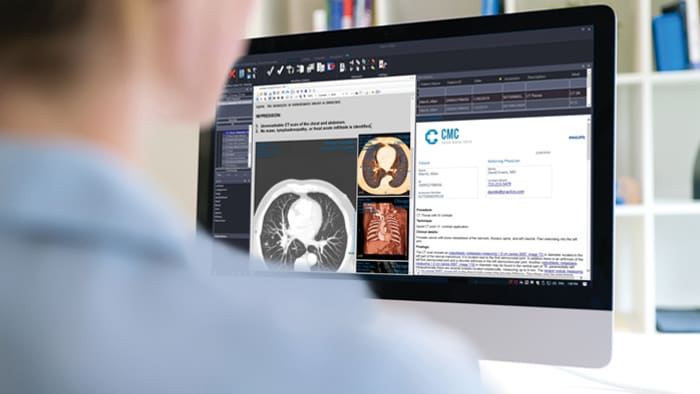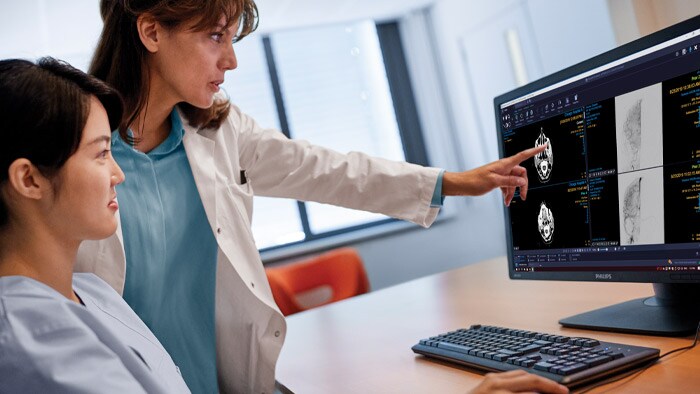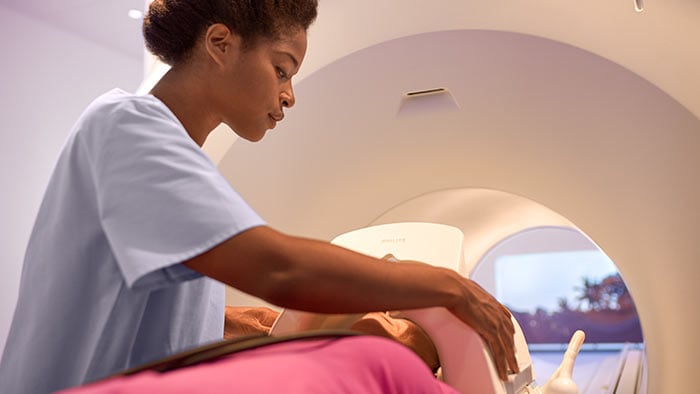Turn the most defining moments in healthcare into a clear care pathway with predictable patient outcomes
The challenges facing imaging today call for a new approach. Arguably the biggest challenge to optimizing radiology workflow is that it’s actually a complex web of separate workflows. Whether it’s getting a patient to show up on time for an imaging exam, acquiring the actual images, or getting the right clinical information in the hands of the referring physician, every step of the imaging process can have delays, variability and gaps in communication. All of that causes waste and frustration, and it can have a negative downstream impact on patient care. Consider some of these recent research findings from radiology departments worldwide:

45%
of radiologists report symptoms of burnout1

44%
of technologists in the US report moderate or severe levels of job stress2

97%
of radiology departments are unable to meet reporting requirements3
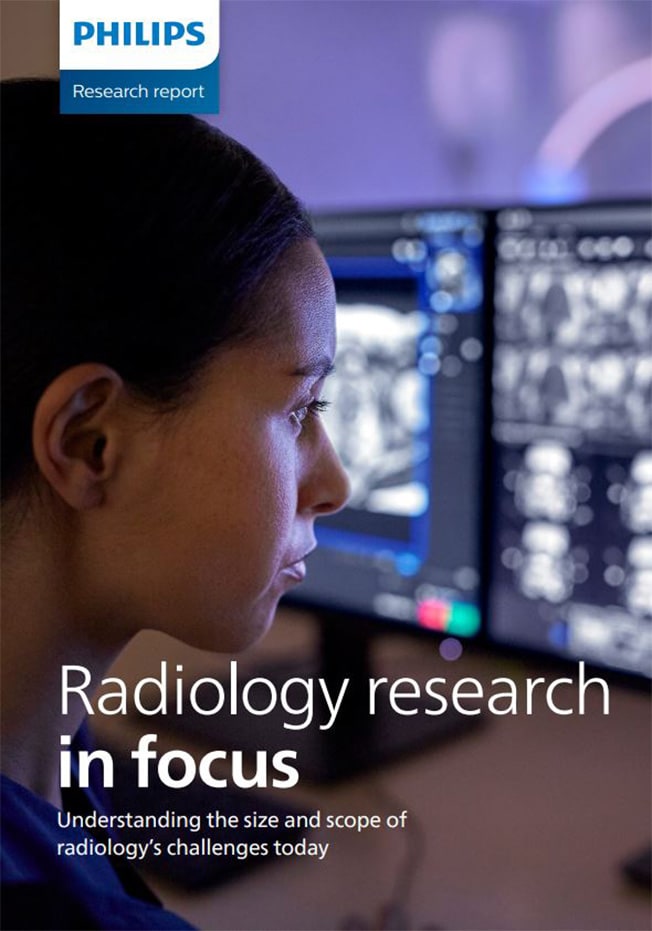
What's happening in radiology departments worldwide?
What are the major workflow challenges facing your radiology department today, and how do they compare with other radiology departments worldwide? Every step of the patient journey feels the pressure, from scheduling to image acquisition to diagnosis, treatment and follow-up. Download the report now to see the scope of the challenges, which is the first step in beginning to address them.
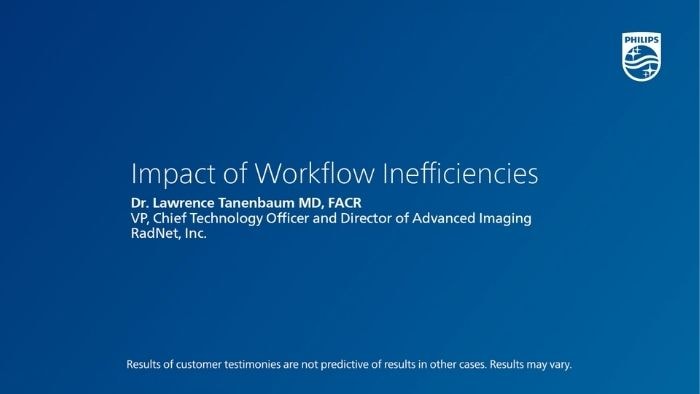
An imaging leader talks about overcoming radiology workflow challenges
What can happen when you address radiology workflow challenges?
Improving and streamlining workflows is leading to significant gains:
Why is it so important to take a systems approach to imaging?
It’s hard to compile a comprehensive view of patients when health data is distributed and sequestered across multiple applications and departments. By taking a systems view of imaging and treatment, you see the opportunities to connect and optimize workflows across the imaging enterprise – from patient management to image acquisition to image interpretation and through results communication and follow-up. This helps to improve outcomes for patients, the work experience for radiologists, technologists and administrators, and the operational and clinical efficiency of the whole department and beyond.
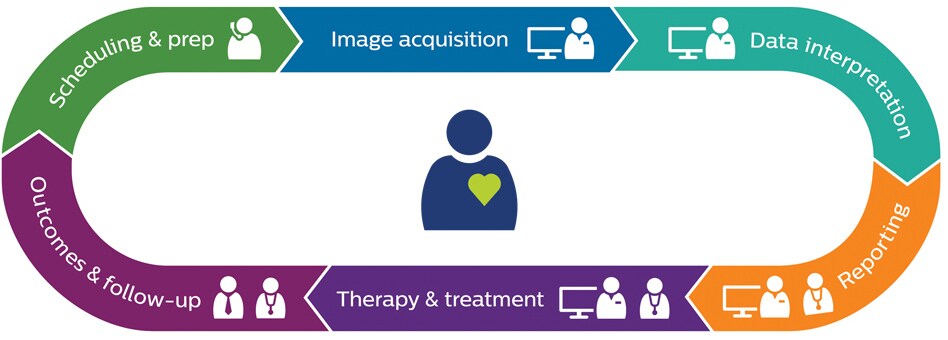
Want to learn more about streamlining your radiology department's workflow?
Together, we can address your greatest workflow challenges
Some of the biggest challenges for radiology leaders stem from managing complex, disconnected workflows that can negatively impact patient care, staff experience, outcomes and cost. What if you could start solving them today?
-
![Tele-acquisition and remote collaboration]()
What if your imaging team could access expert support for complex procedures and protocols whenever they need it?
Read more -
![Patient engagement in radiology]()
What if every imaging patient showed up on time and prepared?
Read more -
![Reporting and results communication]()
What if your radiologists could significantly reduce their reporting time while increasing the value of the report?
Read more -
![Workflow orchestration]()
What if the right radiologist were automatically chosen to read the right case at the right time?
Read more -
![Streamlining image interpretation and reporting]()
What if radiologists could organize, review, analyze and report imaging studies using just one workspace?
Read more -
![Image acquisition]()
What if your radiology systems were so intuitive and intelligent that your imaging teams got the image right the first time, every time?
Read more
Discover radiology workflow the way it is meant to be
Take a deeper look at the solutions that are helping radiology departments successfully address workflow challenges.
*According to the definition of AI from the EU High-Level Expert Group. Results from case studies are not predictive of results in other cases. Results in other cases may vary. 1. Medscape National Physician Burnout, Depression & Suicide Report 2019 (note to designer: link is https://www.medscape.com/slideshow/2019-lifestyle-burnout-depression-6011056) 2. Radiology staff in focus: A radiology services impact and satisfaction survey of technologists and imaging directors. A research study conducted for Philips by The MarkeTech Group, 2019. 3. http://www.cqc.org.uk/sites/defaults/files/20180718-radiology-reporting-review-report-final-for-web.pdf2 4. Advancing key performance indicators with pre-visit navigation: A case study with Boston Medical Center. Philips, 2020. 5. Based on in-house testing. SmartWorkflow solutions in MR | Philips 6. Since implementing and leveraging PerformanceBridge Practice to discover and address the issue, Boston Medical Center has been able to achieve a 14% reduction in CT turnaround time from order to exam start in its ED. 7. Folio, L. et al. Initial Experience with multi-media and quantitative tumor reporting appears to improve oncologist efficiency in assessing tumor burden. RSNA 2015. 8. Based on a project conducted at Banner Health, AZ, U.S. Using PerformanceBridge Practice software analytics, Banner identified an opportunity to drive added MRI volume and revenue in a few ways, one of which was improving MR efficiency by 10-20% to hit a total of 80% efficiency. 9. According to the definition of AI from the EU High-Level Expert Group.


